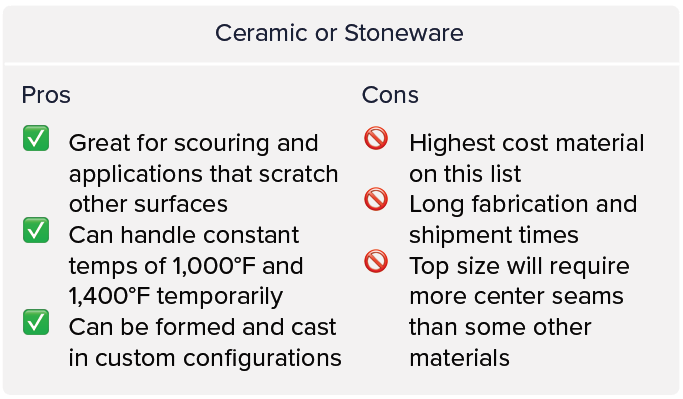A History Of Lab Countertops
Laboratory work dishes out a lot of abuse. Harsh chemicals, heavy equipment, constant handling of reagent and sample containers, not to mention exposure to heat and water, would tear up a common countertop. That is why there is a special category of worksurfaces that are deemed appropriate for the laboratory setting.
In the past, lab work was performed on quarried stone slabs, and Soapstone was a favorite due to its resistance to acids and bases as well as its ability to handle direct heat. It is a beautiful surface that ages well and takes on a rich patina with the oils used to care for it. Nostalgic. Tops like these were widely used during the building boom that followed WWII.
As the market advanced, there was an ongoing search for more consistent, inexpensive, and available surfaces. One stop along the way was a sandstone quarried slab which was impregnated with epoxy resins and built up to a long-lasting, gloss finish. Another was the asbestos-cement worksurface that boasted excellent durability, heat management and chemical resistance. Over time, the sandstone tops faced pricing and availability challenges, while the asbestos ceased distribution for health and safety reasons.
At this point (the mid-70’s and early 80’s) epoxy resin took over the marketplace. Here is where we will begin our journey of the seven countertop material options available to consider for your next laboratory project. We will present Epoxy as our baseline reference for comparison.
Epoxy Resin
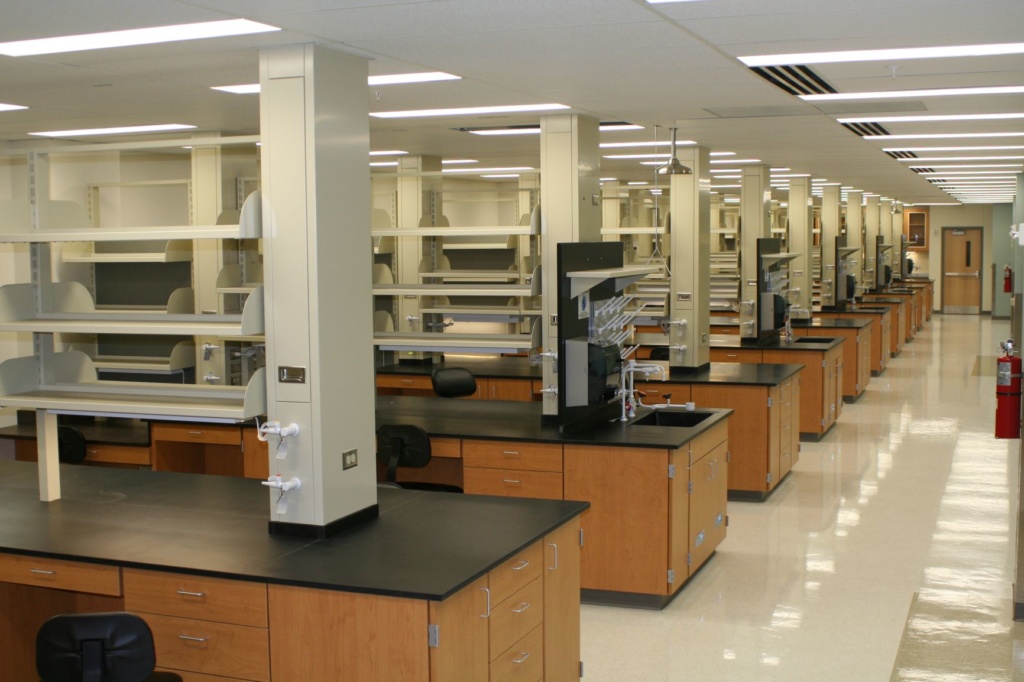
Epoxy resin worksurfaces are the iconic black countertops you see in laboratories in all sectors of the market—from school labs to national research facilities. It has been the dominant market product over the past 50 years and has evolved from a black-only finish to incorporate greys and other lighter colors that can enhance the lab aesthetic (see picture of white epoxy tops below). It is produced by mixing modified epoxy resin with silica (sand) and other inert, non-asbestos substances. This slurry is then poured into thin molds—envision a giant baking sheet—and cured in large ovens to thermoset the epoxy.
The curing process creates a chemical matrix with the epoxy resin so that it becomes one material. The epoxy has a great resistance to acidic and alkaline substances, and the enhancement of silica added to the structure gives excellent heat management properties making it ideal for most laboratory environments.
Another benefit of this top is epoxy resin is monolithic—solid and uniform all the way through. And while it will scratch under normal lab use, that just reveals more epoxy resin.
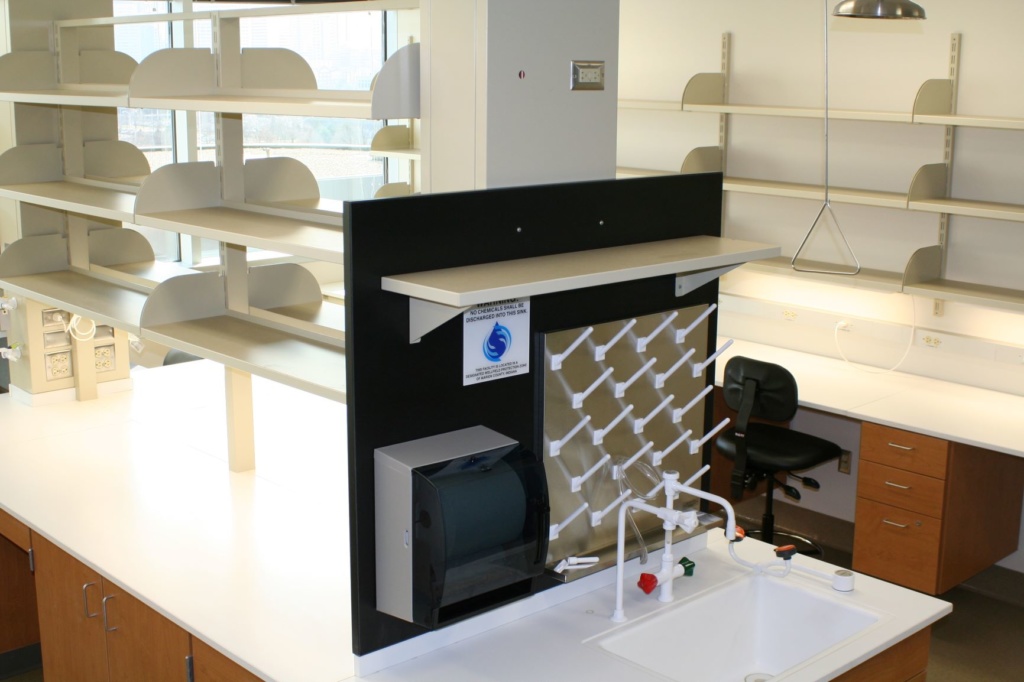
This is the classic top for the current market era, and the baseline for comparison in this review. And while most installations are black, there are plentiful colors available for an upcharge that can make for a modern, pleasant work environment.
One other factor that is to be considered relates to any field modifications to the epoxy slabs required during installation or repurposing. Since this is a silica based product, OSHA regulations require specific and stringent handling of any cutting or drilling processes that could create airborne particles.
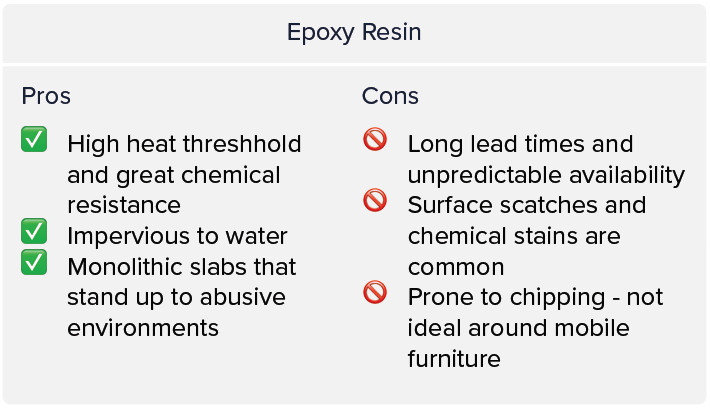
Phenolic Resin
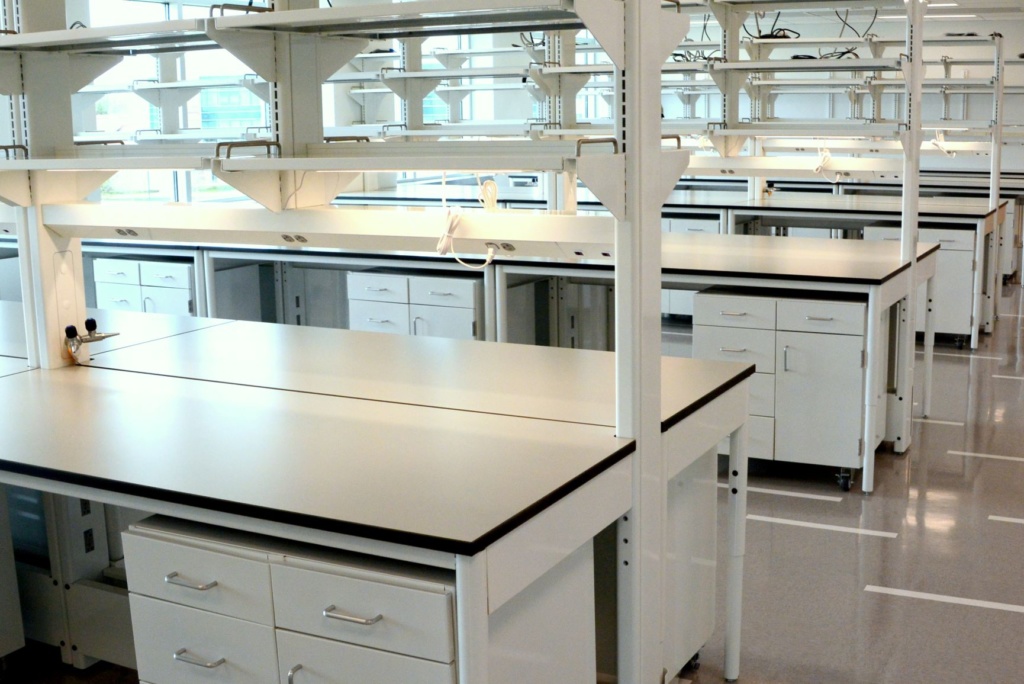
Phenolic resin looks like and behaves like epoxy, but it is basically a thicker version of traditional plastic laminate that has been enhanced with extra chemical resistivity. It is the structural thickness, great wear properties, chemical resilience and ability to handle water that make this product lab grade.
Surveying the products available in the market, phenolic resin countertops now have generally better chemical resistivity and performance than epoxy resin countertops. Epoxy used to be the best chemically resistant material, but now some of the phenolic countertops can handle concentrated acids better.
In the past, phenolic resin countertops were more expensive than epoxy resin; but this inequity has balanced out, and in most instances phenolic tops are now less expensive. As you might expect, there are a number of sources for this material: the market innovators are imported from Europe, others are manufactured in the States, while still other products that tend to have lower prices (but average performance) are imported from Asia.
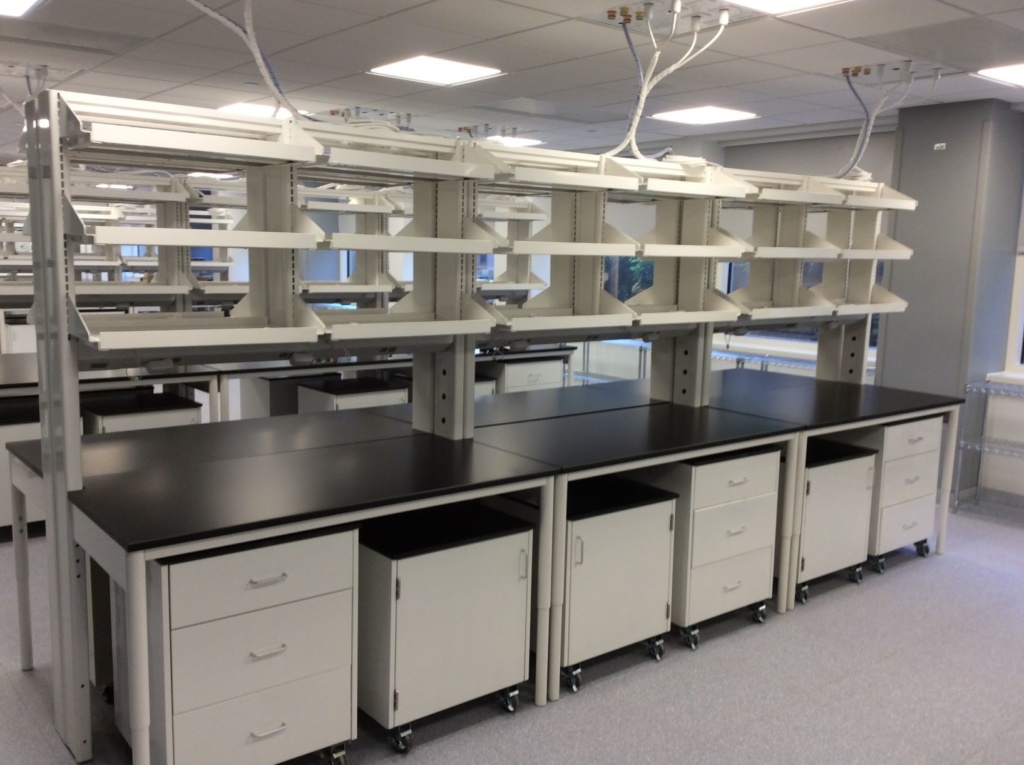
Phenolic resin countertops also have color options. Where epoxy is more expensive and difficult to produce with colors, phenolic can be colored in myriad finishes and patterns. It costs the same to finish in black as it does white or gray or orange.
One new product development is aesthetic: color matched cores. Phenolic countertops have historically had a dark brown or black edge no matter what color was on the surface. This was unappealing for many designers and laboratory planners, but in recent years manufacturers have developed “color-thru” technology allowing the entire countertop to be the same color as the surface.

Stainless Steel
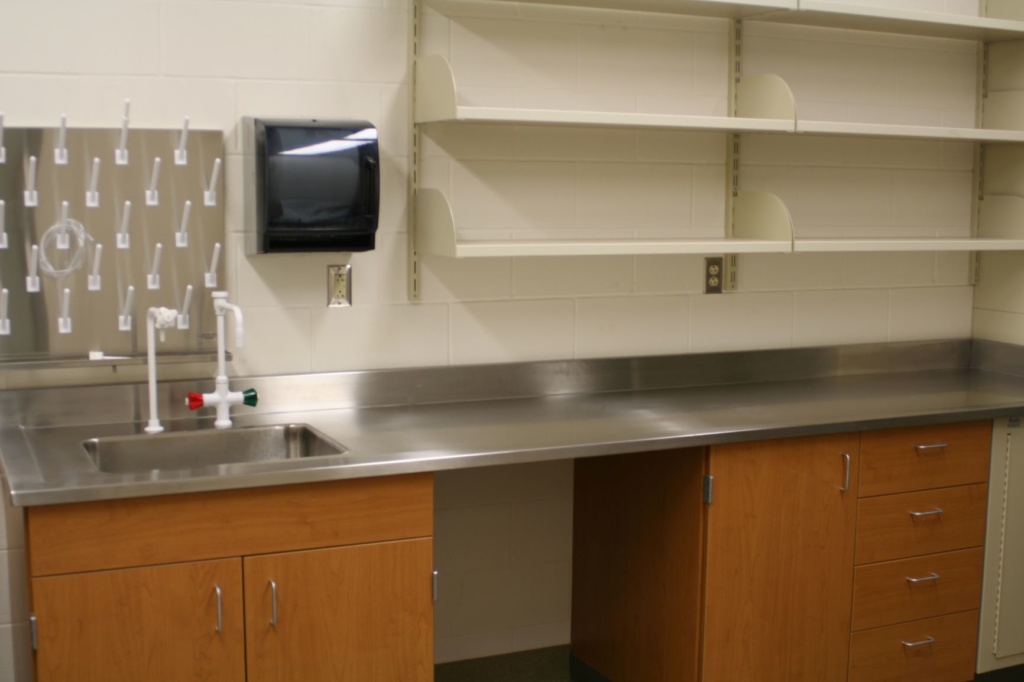
Stainless steel is a great option for many laboratory countertops. It is an iron and chromium alloy that may also contain nickel—and for special applications or corrosion resistance—sometimes molybdenum, copper and other elements.
Ideal for use in industrial situations, stainless steel countertops have been a mainstay in lab environments for decades. There is excellent abuse resistance, recyclability, and flexibility that enables stainless to shine (intended). Because it is a product that is fabricated by metalworking and welding processes, numerous custom configurations can be seamlessly achieved that might be impossible with other countertop surfaces.

There is a double-edged sword with fabrication. Because there are no proprietary fabrication processes, any skilled metalworking shop can supply these tops and thus untether the project from reliance on a potentially constrained resource or extended freight lead times. That also means that quality and pricing can vary wildly and expose the lab owner to risks and require a higher level of scrutiny in the specification, design and installation stages.

Glass
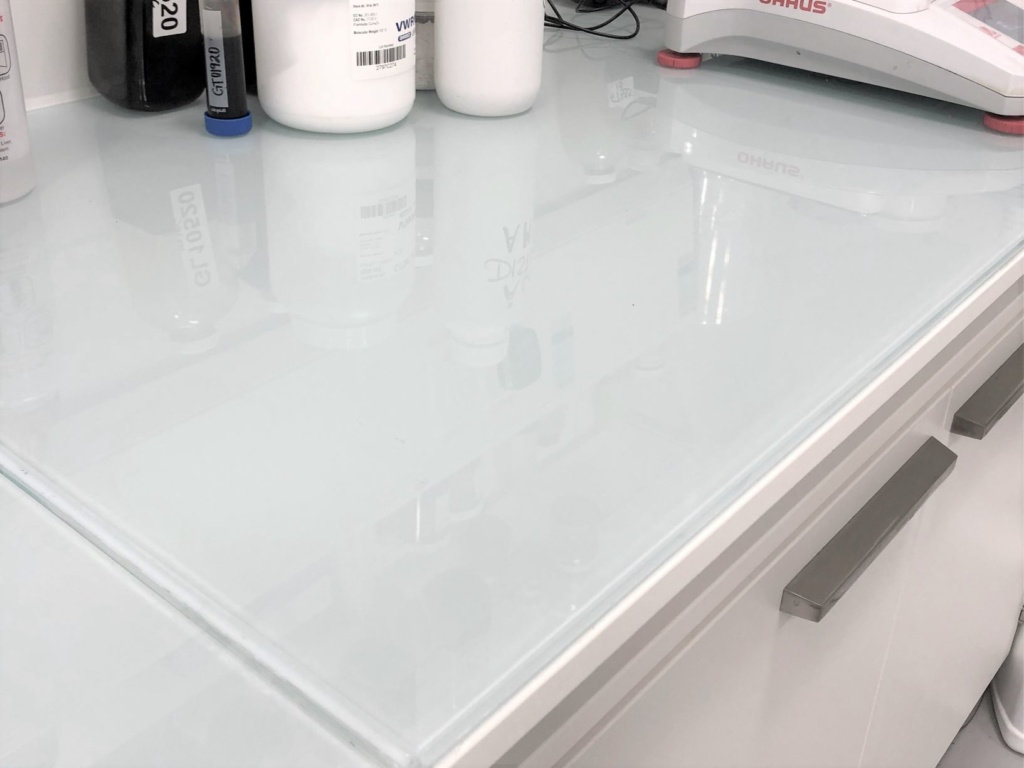
Glass provides a striking and modern aesthetic for a laboratory and keeps its beauty under normal use better than other surfaces. Glass used in laboratories is tempered rather than just annealed, this means that it has been treated thermally to increase its strength and resistance properties. Lab countertop applications sometimes use independent, thicker glass slabs, but often apply a thinner glass to a substrate panel that protrudes slightly for economy and to buffer the edges from impact.
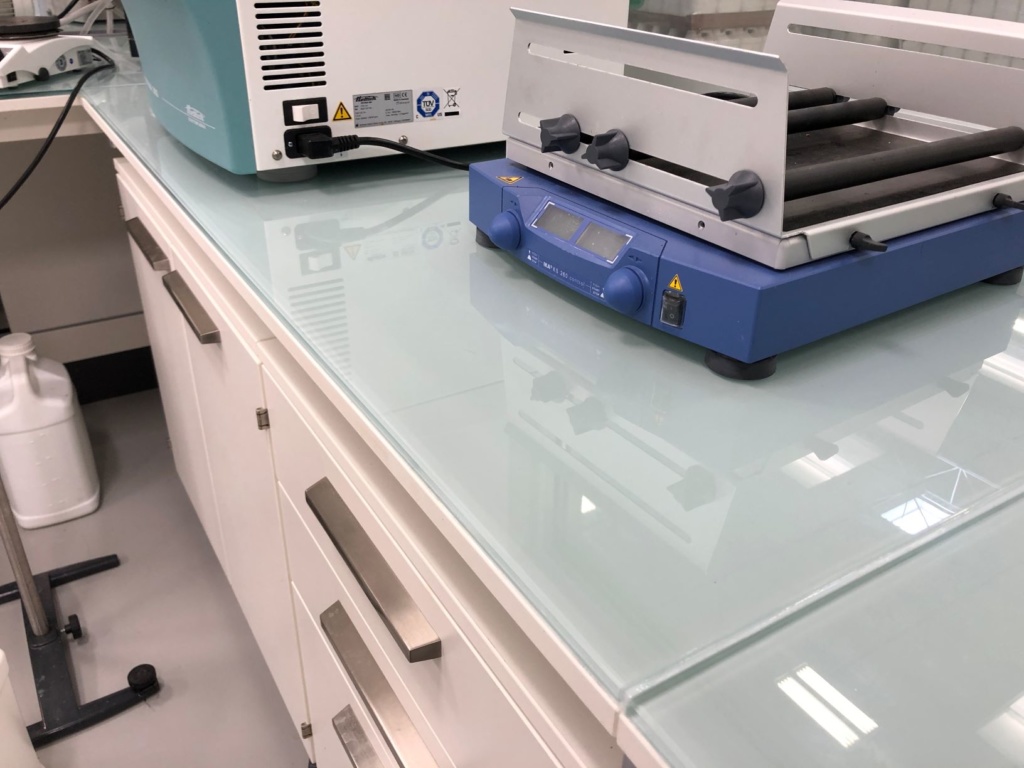
While it may not be a commonly considered option, one benefit relates to the extremely smooth surface finish glass provides. While other countertop materials may be impervious like glass, their surface texture often makes cleaning particularly problematic and require solvents and scrubbing to get clean. This easy cleanability and resistance to stains is especially appreciated in histology, cosmetics and finishing labs.

Standard Grade Plastic Laminate
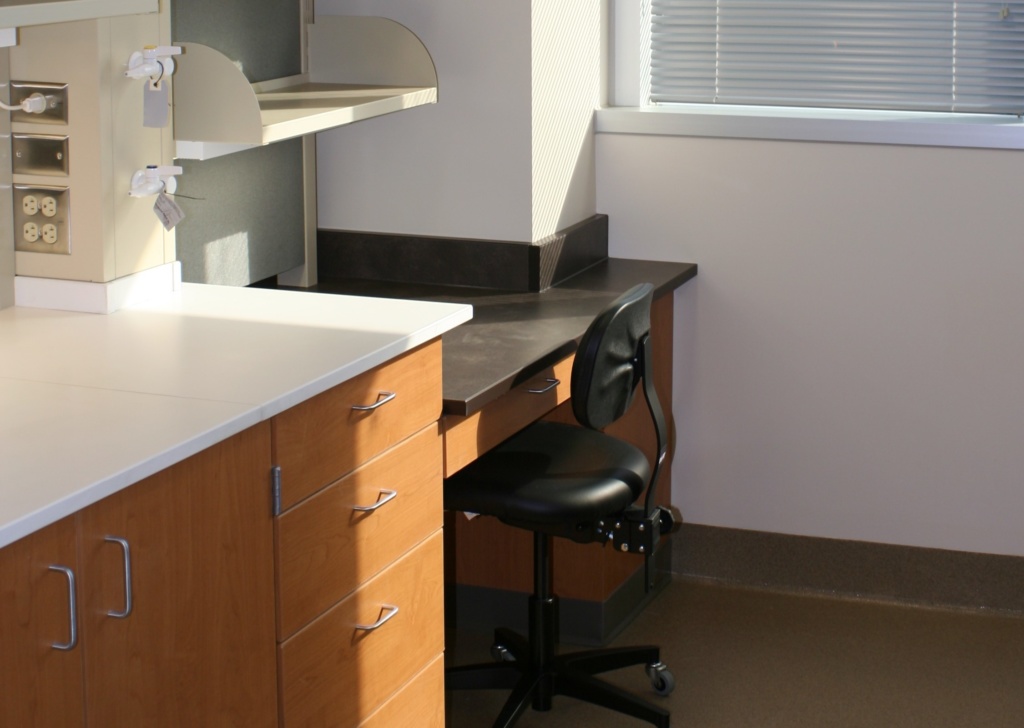
These countertops are commonly used in residential / commercial settings and affordability is their greatest asset. The tops are inexpensive and have good surface wear and cleanability characteristics.
Laminate countertops use a thin decorative phenolic or plastic sheet bonded by glue to a substrate—usually particleboard—and can mimic a wide variety of styles from marble to stainless steel. The material can be fabricated into different thicknesses and shapes, but is limited by sheet size. Plus, it has moisture and durability concerns that generally disqualify it from lab service.
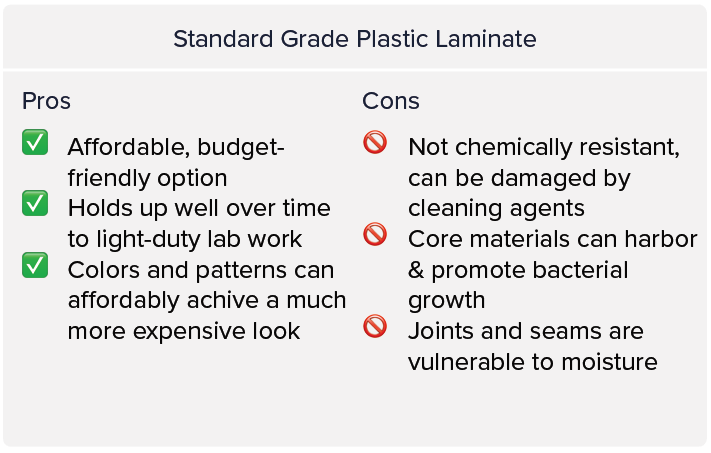
Chemically Resistive Laminate
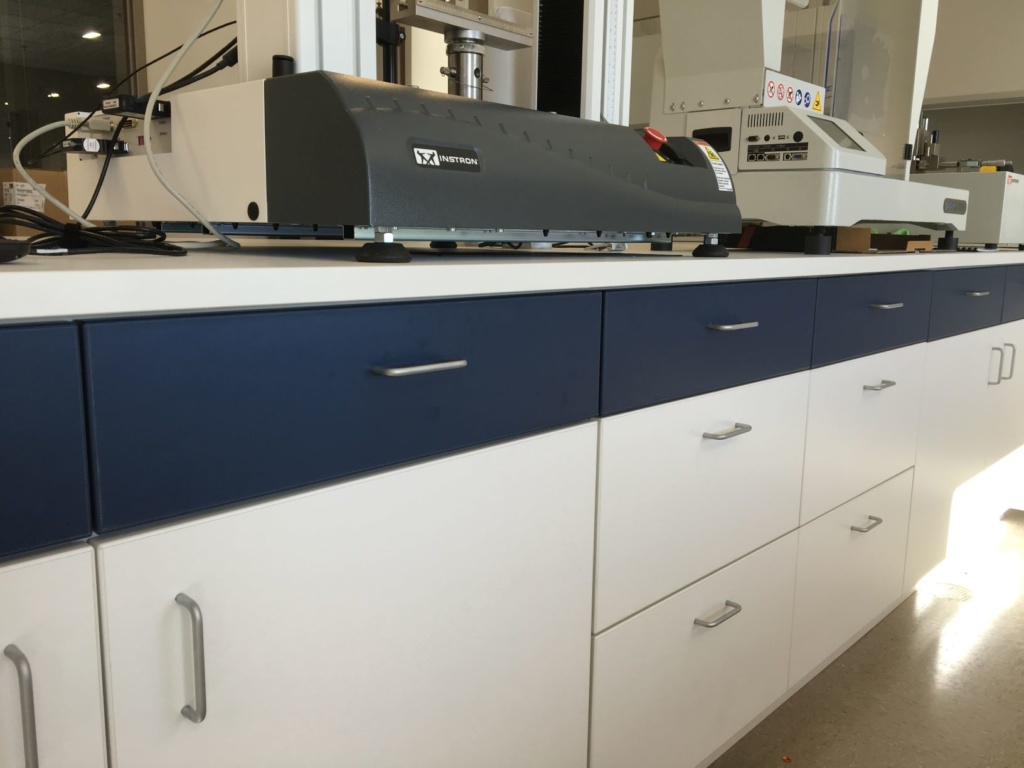
Chemically resistive laminate is made by applying thin protective resin layer over the decorative surface paper of laminate at the factory. This improves the resistance to chemicals, including bleach and other cleaning & disinfecting products.
While its main appeal has been to keep design aesthetic finishes on cabinet doors and drawer fronts, it is sometimes used on countertops to approximate the benefits of phenolic resin (see above) at a marginally lower cost. Bear in mind some fabricators charge more for the product due to scratching that can occur in normal assembly and shipping that requires additional care.
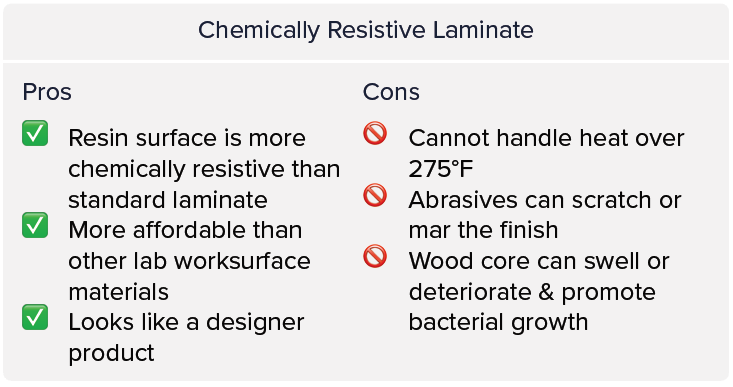
ESD Laminate

ESD laminate or Electrostatic Dissipative Laminate diffuses static electricity to protect electronics and other static-sensitive devices from electrical charges that could damage them.
The laminate behaves much like standard plastic laminate, but for can be an essential component for electronics benches, fine weighing operations and some cleanroom applications. ESD laminates are made with a carbon layer that dissipates any static electricity that is generated.
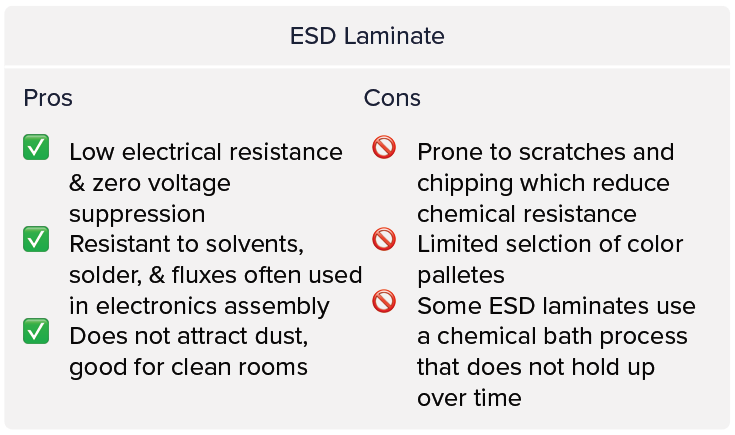
Wood
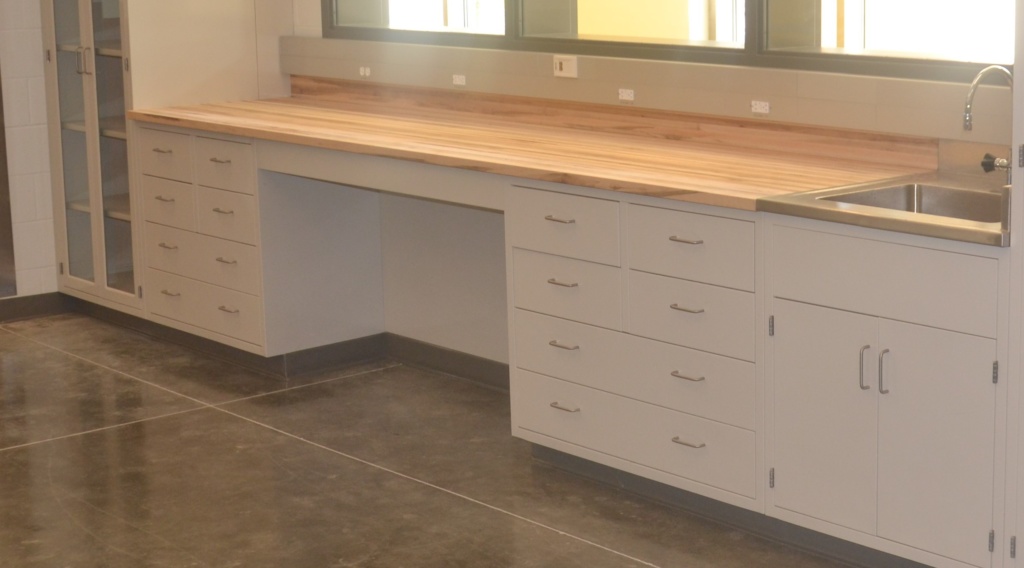
Wood countertops are not as common in lab spaces, but where high physical abuse is present but low chemical use is anticipated, “butcher block” tops are often used. This top uses natural wood planks that are bonded together. Most laboratory tops are “edge grain” style where the faces of wider strips of wood are glued together and the thinner edges stripe the top of the surface. Maple is the typical wood used and can be selected has hard or soft grained, but other species can be specified depending on the desired look or application.
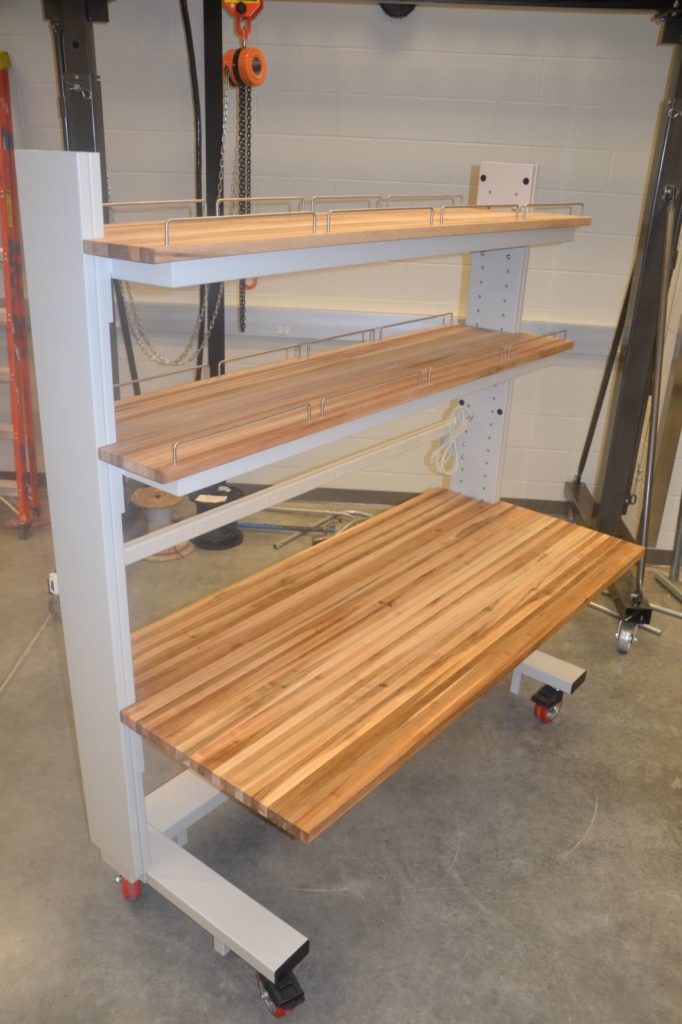
Thickness can be specified based on aesthetic preference or function. Common options range from 1.25” – 2”. Also, the top finish can vary from a natural surface with an applied oil that can be reapplied as needed, to a factory applied conversion varnish that will give years of life.

Ceramic or Stoneware
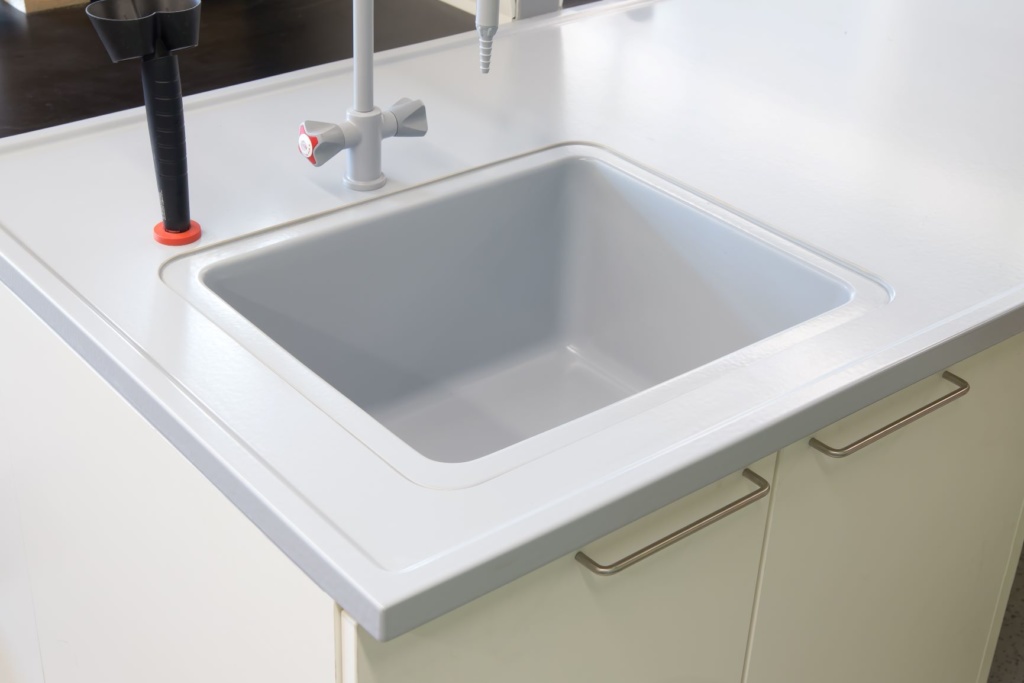
Technical ceramic tops are more common in European laboratory settings, but the appeal of the product is bringing introduction to other geographies. This extremely hard product has an unparalleled finish that is durable, scratch resistant, thermally and chemically resistive. Acids like aqua regia or concentrated sulfuric and sodium hydroxide that would etch or mar other surfaces are no problem for technical ceramics.
The process begins with clay and other earth based materials like feldspar which are cast and fired with a finish glaze. This process creates a fully self-supporting top that is available in different colors and custom configured to the space and application. One benefit is the cleanability for grease, dyes, and pigment finishes that would stain other surfaces. And the hard finish that helps keep the lab space looking new also has no pore—so there are no places for any biological concentrations that could contaminate experiments.
